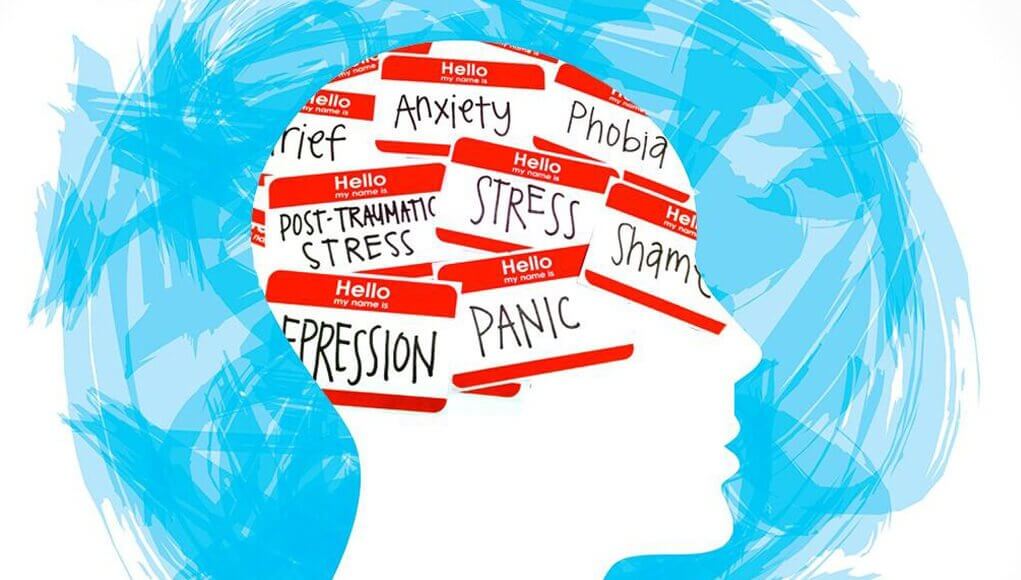The current spate of the Covid-19 outbreak is having a telling on the emotional and mental health of the majority of the Indian populace, especially some groups. Evidently, the social and economic fissures exposed by the pandemic are proving to result in mass unemployment, depleted social safety nets, starvation, increase in gender-based violence, homelessness, alcoholism, loan defaults and millions slipping into poverty. This post-Covid-19 landscape will be a fertile breeding ground for an increase in chronic stress, anxiety, depression, alcohol dependence, and self-harm. Even before the advent of Covid-19, a Lancet study of December 2019 estimated that one in seven Indians were affected by mental disorders. Around 197.3 million people had mental disorders including 45.7 million with depressive disorder and 44.9 million with anxiety disorders. Obviously for people with mental health issues, would be the hardest hit by the uncertainty created by the pandemic.
According to the Indian Psychiatry Society, the number of mental health cases – including anxiety and depression – has risen 20 percent since the lockdown was first announced on March 24, mostly attributed to the decline in social activity and restricted movement. Going by the history of pandemics, and the knock-on effects of an inevitable economic downturn, India is looking at a mental health crisis, with suicide-related deaths as its lead indicator. At-risk populations include the 150 million with pre-existing mental health issues, Covid-19 survivors, frontline medical workers, young people, differently-abled people, women, workers in the unorganized sector, and the elderly. For a country with the highest number of poor and malnourished, and individuals with depression and anxiety, this is the perfect storm.
The lockdown applied to three main areas: physical movement out of the home, social distancing when outside the home, and restricted availability of most public services while sparing essential services. There was a sudden and drastic alteration in the daily routine, with many millions stranded in boarding houses and rental apartments, without work and far from home. Academic work ground to a halt, with auxiliary staff like cleaners, security guards and gardeners suddenly being thrown out of their contractual work.
Earlier studies have shown that this sudden loss of employment, along with financial stress or even distress, could enhance the psychological impact on the working community, shown by symptoms of increased aggressiveness and post-traumatic stress. One such group is the sexual minorities, who are already excluded from most mainstream Indian communities. Such individuals may quite well be unable to visit others in their community, which puts their sex lives on hold or may encourage risky sexual behavior. Another needy group is the community of old and sick people, often without immediate family caregivers in the vicinity. They are known to have a higher risk of acquiring the infection. Healthcare staff who are exposed to potential sources of infection on a daily basis are even more likely to be stressed about the possibility of not only becoming infected but carrying the virus home to their families and friends.
Studies from Wuhan and Australia showed high levels of depression among frontline healthcare workers and people in communities with high infection rates. Such anticipatory stress and anxiety, along with loneliness, could not only affect mental health but lead to a decline in lifestyle quality and, ultimately, one’s health choices. Depression is a known risk factor for sleep disorders and eating disorders. However, India also offers, by virtue of its social structure, a variety of personal and social resources that help cope with such crises. Family is one such vital resource, and being in close touch with relatives, in real life or virtually via social media or the Internet, alleviates stress considerably. Of course, the opposite situation prevails with those who do not get along well with their families, inducing more conflict and promoting poorer outcomes during this period. In addition, there are many factors which operate at an individual level, such as the kind of job (menial, farming, semi-skilled, skilled, office workers and managers, and professional workers), the availability of material resources if required, and the psychological make-up of the individual (resilience, coping, and optimism).
Notwithstanding the fact that India’s investment in mental healthcare services projected below par with the budget allocation getting slashed by 20 percent in the last Union Budget. According to estimates, Rupees 93,000 crores will be needed to implement the National Mental Healthcare Act 2017. Thus, way forward should be to Mental health and suicide should be treated as a public health crisis that needs immediate fixing. pump in the required finance for MHCA from the PM Cares Fund, corporate social responsibility initiatives, private equity, and perhaps, a new national lottery. At the center of this should be a large public engagement campaign to increase help-seeking. Mainstream media and social media giants can be roped in to create and spread awareness. There is a good chance that substance use problems will arise after Covid-19. It will be beneficial to provide rehabilitation services that address both physical and psychological aspects. Community-based interventions such as Atmiyata’s community-based volunteers in Maharashtra and Gujarat, SCARF’s mental health mobile vans in Tamil Nadu, and Sangath’s VISHRAM, that used community health workers for the first line of treatment (depression fell by 22% and prevalence of suicidal thoughts fell by 51%), can be scaled.
To reduce the pressure on the overworked primary and secondary mental health task force, the focus should be on self, family, community, and primary care. Group psychological support for the unemployed through non-profits and the community will help. Training millions in suicide prevention techniques and combining crisis intervention by providing psychological first-aid will help save lives and reduce emotional distress, preventing long-term trauma. Digitally-mediated therapy and telepsychiatry, which NIMHANS run intervention in Karnataka has already proved successful, should be scaled up.
Finally, it needs stressing that every crisis provides some opportunity. For example, the 1918 global flu epidemic stirred many European countries to create national health services. While mental health woes can shave off 3-4% of GDP, every dollar investment has a return of four-six times, as studies indicated. Mental health and suicide prevention interventions can not only save lives but also make immense economic sense.














